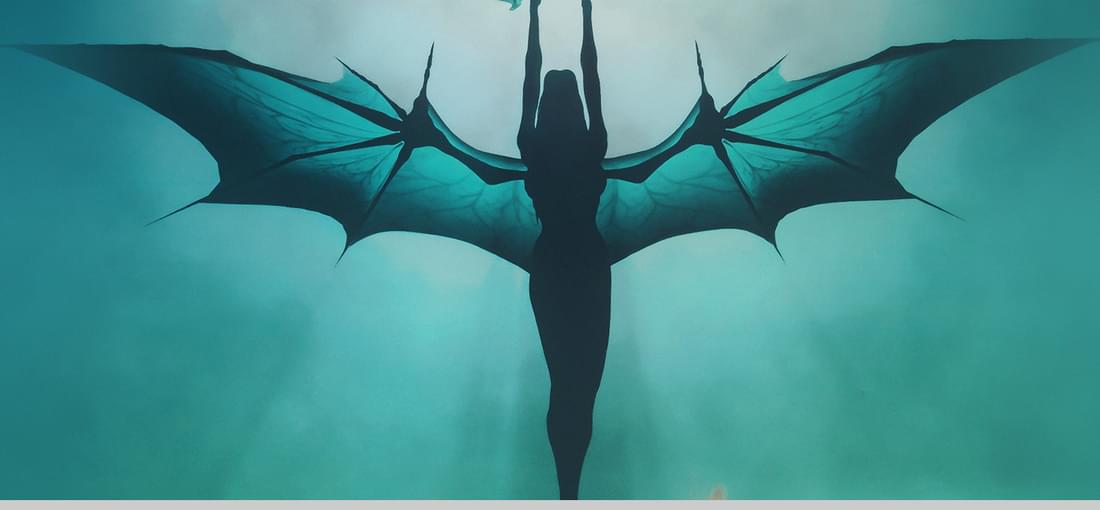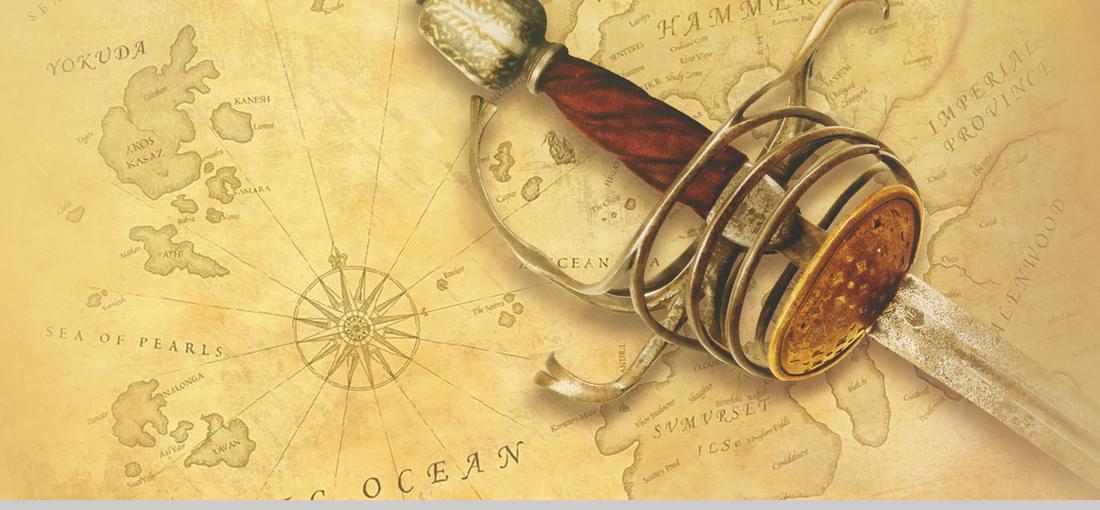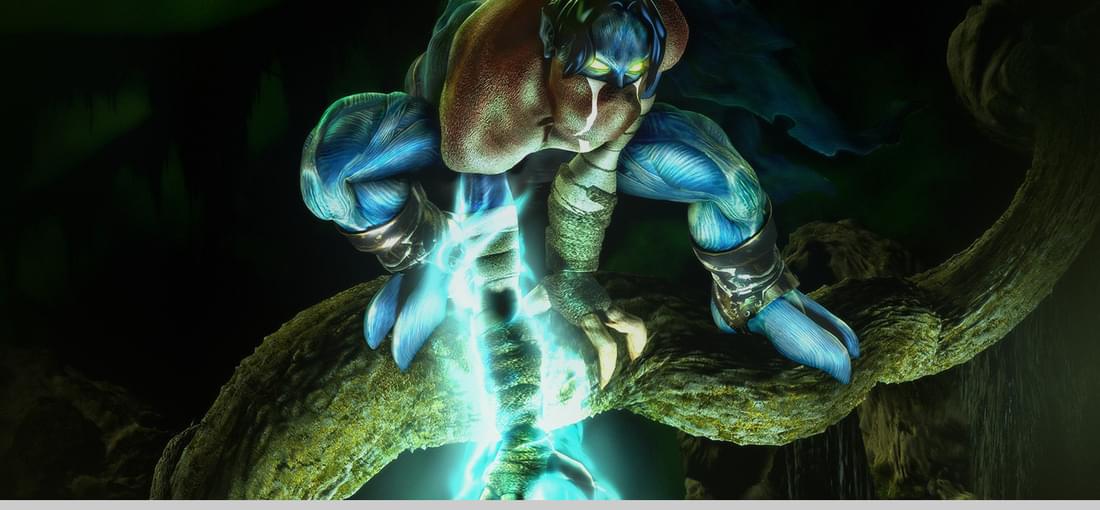


Battlespire used Bethesda's own DOS-based XnGine video renderer, which was occassionally susceptible to clipping and collision-detection errors in the game environment. At any rate, keeping this limitation in mind while navigating yields relatively few issues, as it becomes pretty much second-nature where and when these issues arise. The innovative jumping feature in Battlespire helps the PC avoid a lot of frustration from this issue. Battlespire is commonly described as a dungeon-crawler; but this is not really the case: you're in a massive tower filled with very diverse corridors, chambers, entrance-halls, etc.; sometimes you are transported to distinct realms that are expansive and open -- it's a chaotic and whimsical wizard's tower, after all. Melee/magic, effects/outcomes are basically what one would expect with this video-renderer: occassionally unpredictable and quirky. But what makes Battlespire so impressive, and so atmospheric, is the contemplative, charismatic, and diabolical motives of its denizens (primarily the Daedra, an omnipresent, praeternatural faction, who keep the dullards of Tamriel on their toes): NPCs are relevant and substantial; they are not merely hyperbolous, interactive props who grant access from point A to point B. Each has their own voice, dialect, and personality. The evirons are very immersive. The music (Absolute Pitch) is varied and appropriate. . . outstanding, actually. All these aspects are encapsulated within a good story. Julian LeFay had such an incredible talent for the mercurially wondrous. I think Battlespire was his final major contribution to the TES series. Be sure to READ the manual, and the accompanying readme.txt. . . The Daedra suffer no fools.

Redguard was packaged with the 3DFX engine created by graphics-card manufacturer 3DFX, who produced graphics cards ("Voodoo/Banshee" chipsets) that had become obsolete when the time the game was released; the 3DFX graphics-renderer and Voodoo cards did not support Direct3D, which was the standard, higher performing software-renderer most PC-owners were using when Redguard was released. Direct3D (later a component of the DirectX standard) was amply supported by Nvidia and Radeon (AMD/ATI) technologies. Consequently, few machines were in use which could actually run this game, which is the primary reason it fell off the radar; and, saavy merchandisers didn't even bother to procure it for retail. Other than getting up-front development capital by promoting the 3DFX engine, it's beyond me why Bethesda went in this direction. The only things Redguard has going for it is some very impressive artwork, especially for the late 90s, and a good story. The combat mechanics are just plain horrible, the worst I've ever seen: parrying with your sword is a crucial component, but often becomes glitched (even with the auto-defend option) such that you're a human pin-cushion. Navigating obstacles requires tedious effort: the PC incessantly bumbles and meanders around attempting leaps and evasive tactics: this is a major problem, since Redguard is basically a 3rd-person, jump-challenge, 3-D platformer. There are a few puzzles in the game, but arriving at the solution is such a cumbersome, counterintuitive process that the revelation is no more than a means to an end. Historically, I think its very fair to note that Redguard became a rudimentary template for the signature world-building, lore, and art which became trademark to the TES genre; and, in this respect I highly recommend playing it to some extent, just to see how it all began. Morrowind, its successor, is an example of how spectacular results come from experimentation and setbacks.

I liked this game; the experience was similar to Neverwinter Nights, Baldur's Gate, etc. Combat is turn/roll-based, but AoD enhances combat: you don't just merely "bop" your foe; you have to tactically decide how you'll dispatch him. . . quick cuts, jabs to the neck, etc. Of course, you don't have have to be a slicer/dicer; you can be a schemer/plotter. . . and puppet-master the slicer/dicers; it's all up to you. AoD has very strong role-play elements, good music, and nice art. Replay-ability: I've role-played a merchant and an assassin; 3-5 yrs. from now, maybe play the game again. AoD supercedes a lot of games of similar genre re. story, combat tactics/realism, and NPC significance; the one thing it lacks is immersion -- a sense of actually being there: no winds in the desert. . . no atmospheric effects whatsoever actually, no one talking in the taverns, no den or bustle in the cities, no looming or curious sounds in the wilderness. Going from one place to another was a merely a means to the next objective, albeit some objectives did have some really good art, description, and dialogue. And NPCs: well, relatively consistent behaviours, attitudes, and narrations, dropping bits and pieces about the world, giving you instructions on your next objective. . . nothing really idiosyncratic. For example, if you play some the the modules (community modules) for Neverwinter Nights, say, the "Almraiven" series, or the timeless classic, "A Dance with Rogues", both being outstanding works, there is a deep sense of darkness, dread, commerce, activity, brutality (especially with "Rogues"), wonder, forboding, etc. reflected in the dialogue, narration, and in-game aesthetics. Some of the community modules were better than the vanilla itself. At any rate, the lack of immersive-ness in AoD doesn't really motivate me to experience it again; "A Dance with Rogues" I've played 5-6 times. AoD is a good game, play it. It's a uniquely, enjoyable experience.

I'd played nearly all the "Legacy of Kain" games on the PS2, and each game was amazingly well done. The story was original and deep, almost novelesque. The cinematics, voicing, and in-game atmosphere were outstanding for that time-period. Movement and action was smooth and polished. All these characteristics comprised in a game for console was exceedingly rare at the time; I imagine the PC versions are even better. Please don't miss out on this experience!